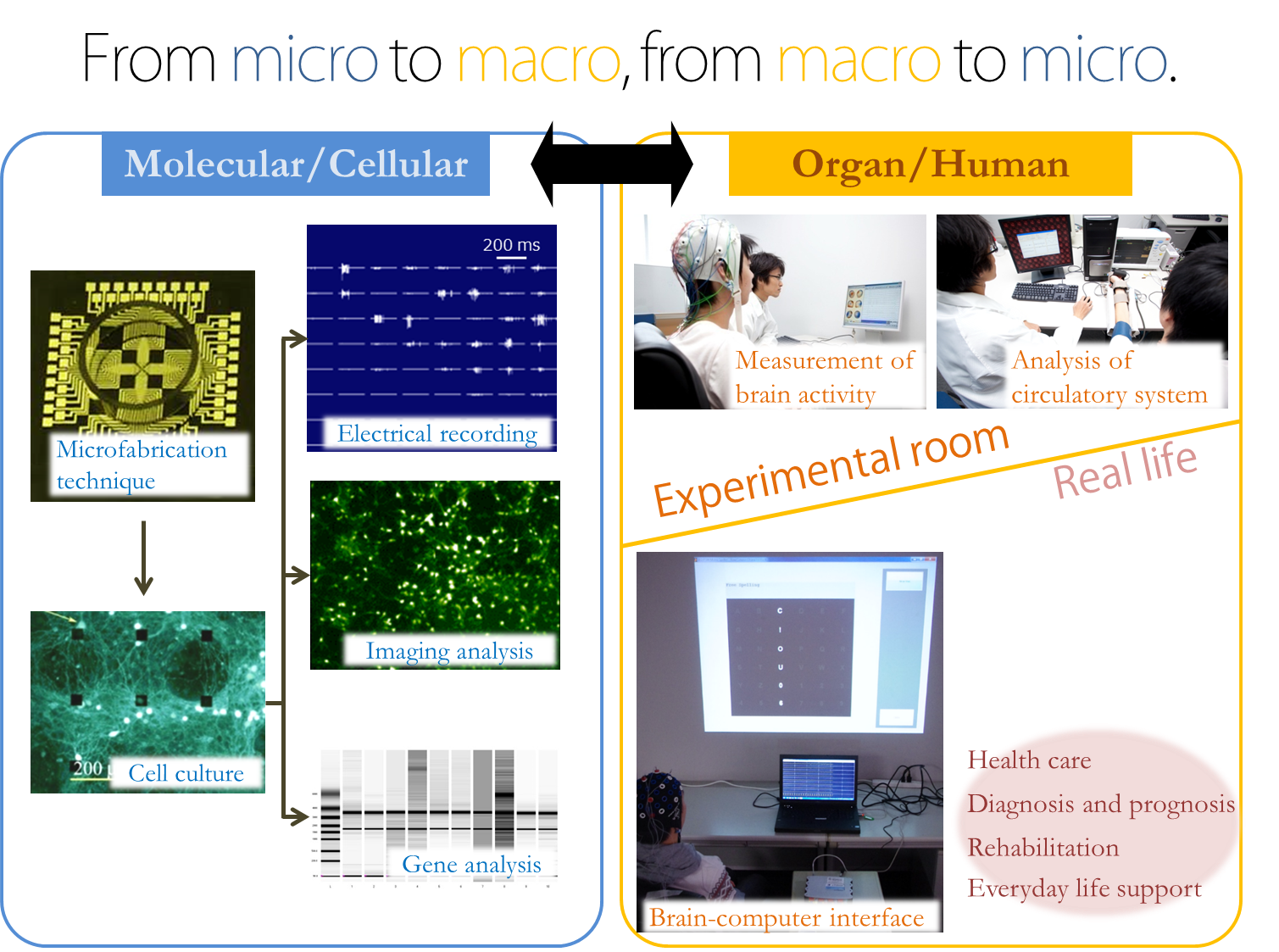Home_English
Jimbo & Kotani Lab
From iPS cells to brain-computer interface
Our study of biology and biophysics is multiscale, ranging from the molecular and cellular level, through the level of the organs, to the individual human level. Our strength lies particularly in the areas of microfabrication techniques optimized to investigate the dynamical interaction between iPS-derived neurons and dissociated neurons, brain-computer interfaces that systematically read users’ intentions from brain signals, and mathematical biology that analytically links multiscale dynamics using state-of-art mathematics.
Our laboratory is part of the Department of Precision Engineering, School of Engineering, The University of Tokyo. The main topics of research by our group are listed below.
- Long-term electrophysiological recording of large populations of cultured cells using microfabrication techniques
- Stem cell transplantation
- Mechanisms of vagus nerve stimulation in epilepsy
- Mechanisms of autonomic nervous system innervation of cardiac cells and application to regenerative medicine
- Effects of magnetic stimulation on the nervous system
- Biology-driven mathematics
- Multiscale mathematical model of the brain
- Non-invasive measurement of the human brain
- Evaluation of cardiovascular regulation and its application in health care systems
- Enhanced brain-computer interface by multimodal augmented reality techniques
- Biofeedback systems for human support
Dataset
Isomura T., Kotani K., Jimbo Y. Cultured cortical neurons can perform blind source separation according to the free-energy principle. PLoS Computational Biology, Vol. 11, No. 12, e1004643.
Supplementary Dataset. Detailed dataset of responses of cultured neurons. Data are trains of evoked spike numbers in trial 1 to 100 in each culture. TRN, data from the training group (x(t)_trn_1.csv, …, x(t)_trn_23.csv). APV, data from training group in the presence of APV. PRT, data from the partially training group. In file names, alt1, alt2, alt3, and alt4 indicate data under the alternative conditions where (merged balance (a), source firing probability (ρ)) = (1/2, 1/2), (3/4, 1/4), (3/4, 3/4), and (1, 1/2), respectively. Full descriptions of these data can be found in the paper. Data can be downloaded via the following links:
- spike_train_trn.zip (25 MB)
- spike_train_apv.zip (10.3 MB)
- spike_train_prt.zip (3.1 MB)
- spike_train_alt1_2_3_4.zip (17.5 MB)

コメントを残す
コメントを投稿するにはログインしてください。